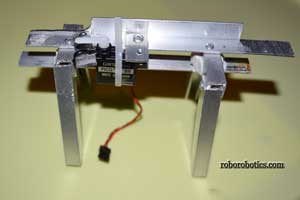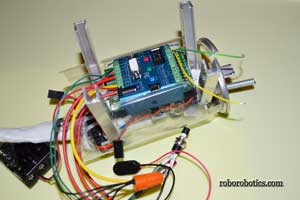Animatronic Structural Support
 The mechanics that make an animatronic figure move, like cables, pnumatics, and servo motors, need structural support. Design all parts supported by a motor or cylinder with lightweight rigid materials like strong plastics and aluminum. The lower weight reduces the wear on mechanical parts and lowers the amount of work needed to move pieces.
The mechanics that make an animatronic figure move, like cables, pnumatics, and servo motors, need structural support. Design all parts supported by a motor or cylinder with lightweight rigid materials like strong plastics and aluminum. The lower weight reduces the wear on mechanical parts and lowers the amount of work needed to move pieces.
Aluminum
Aluminum is an ideal material for a frame because it can bend significantly before failing and it has a much lower unit weight than steel. The reason aluminum is not used in more applications is the cost. The cost of aluminum is still increasing, but for the amount needed in a animatronic frame, cost should not exclude this material. Aluminum rods, tubing, plates, angles, H-shapes, and channels are all reasonably priced. Three foot and longer sections are available at most large home improvement stores or online. Square tubing, plates, H-beams, angles, and channels have the advantage of easy connection with other aluminum sections, using bolts to build a frame. Steel bolts used with aluminum must be galzanized or aluminized to avoid corrosion cause from contact with the aluminum.
Aluminum comes in different alloys, therefore, it has different strengths. The aluminum alloy is identified by a 4-digit code. The first number of the code indicates the main alloying ingredient. For example, a 3003 used manganese as the main alloying ingredient and a 5456 used magnesium. Casting alloys should be avoided. They have a decimal before the last digit (ex: 356.0).
Aluminum designations also include letters after the 4-digit code. If the letter is a T, it means the aluminum was heat treated. The letter H indicates the metal was strain hardened and an O indicates the aluminum was annealed.
Generally cheaper stock aluminum is a 3003 alloy. Watch out for recycled aluminum, since its properties may be unpredictable. The 3003 material has the following properties:
- weight = 170 pcf
- Modulus of Elasticity (tension) = 9800 ksi
- Modulus of Elasticity (compression) = 10000 ksi
- Modulus of Elasticity (shear) = 3750 ksi
- Poisson's ratio = 1/3
- Coef. of thermal expansion = 0.000013 per degree F
- Tensile strength (in tension) = 20 ksi
- Yield strength (in tension) = 17 ksi
- Yield strength (in compression) = 14 ksi
- Ultimate strength (in shear) = 12 ksi
- Yield strength (in shear) = 10 ksi
- Ultimate strength (in bearing) = 40 ksi
- Yield Strength = (in bearing) = 25 ksi
 Depending on the type of loads on the aluminum, check the section design for lateral buckling, torsional buckling, local buckling, shear, yielding, and fracture (tension).
Depending on the type of loads on the aluminum, check the section design for lateral buckling, torsional buckling, local buckling, shear, yielding, and fracture (tension).
